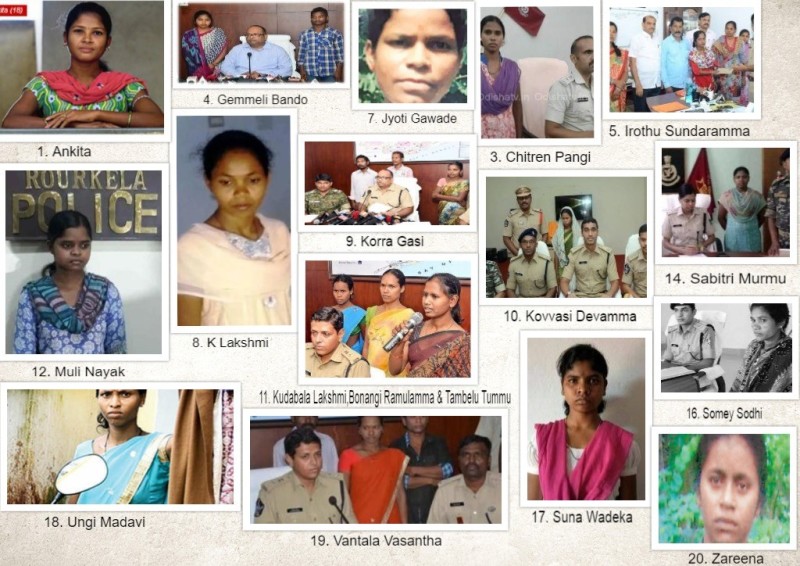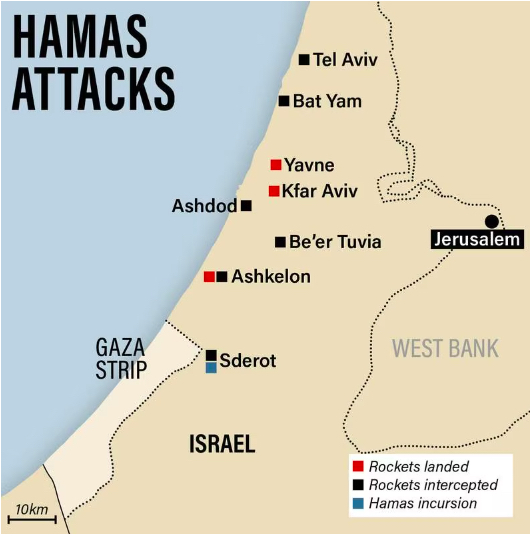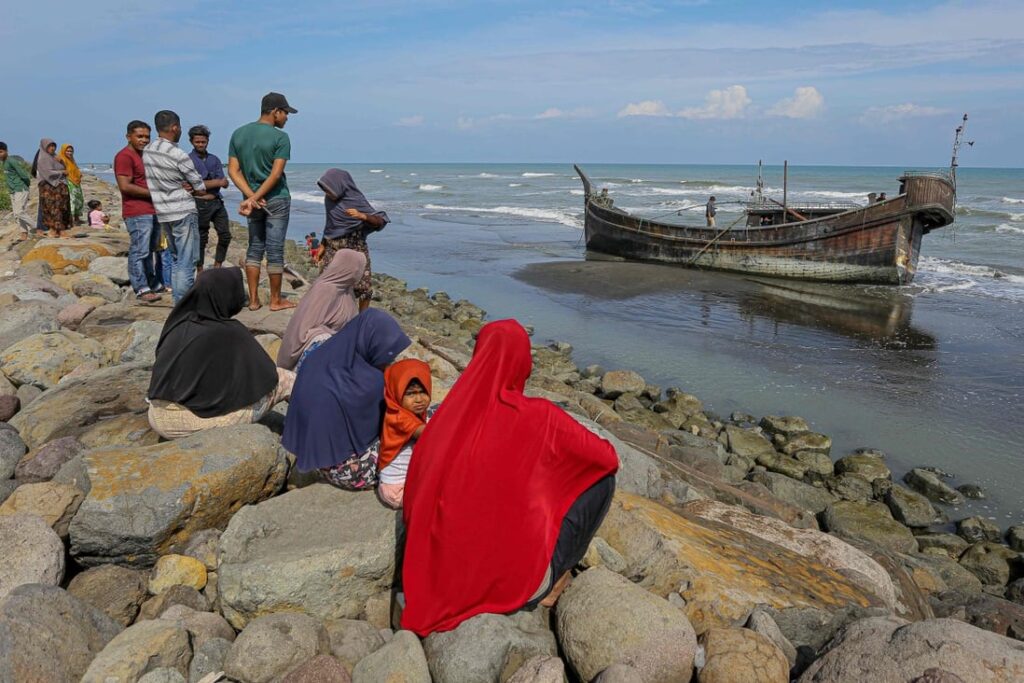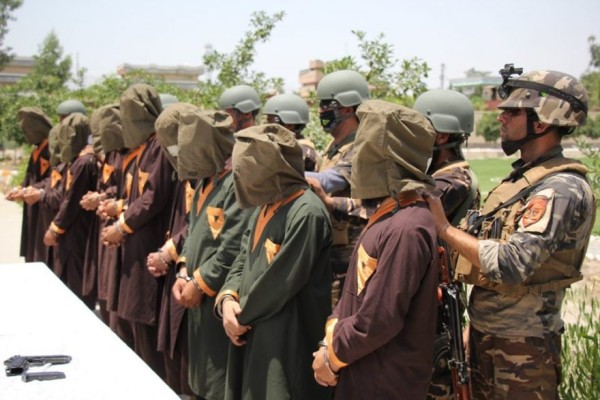MANTRAYA SPECIAL REPORT#12: 30 JULY 2018
RHEA MAHESHWARI
Abstract
While official assessments point at the forced recruitment of women by the extremists and their exploitation within the organization, the left-wing extremists of the Communist Party of India-Maoist (CPI-Maoist) underline the important role played by women in their operations and the organization’s growth. Amidst such contesting narratives, this report, containing profiles of 22 women cadres, is an attempt to contribute to the scant literature on the subject.

In 2015, a senior leader of the Communist Party of India-Maoist (CPI-Maoist) claimed that more than 50 percent of the outfit’s armed wing, the People’s Liberation Guerrilla Army (PLGA) are women.[1] In 2013, India’s Ministry of Home Affairs (MHA) assessed that over 60 percent[2] of the lower rank cadres of the CPI-Maoist are women. Earlier in 2010, CPI-Maoist estimated that women constitute 40 percent[3] of its cadre strength. The wide gap between these assessments is not the only point of divergence in perception between the State and the extremists.
While official assessments point at the forced recruitment of women by the extremists and their exploitation within the organization, the CPI-Maoist pays glowing tribute to the contribution made by women to its growth. Amidst such contesting narratives, this report, containing profiles of 22 women cadres, is an attempt at contributing to the literature on the subject that lies mostly in newspaper reports/commentaries and scholarly articles behind the paywalls. These women have either been arrested, killed or have surrendered in recent years (post-2015) and are no longer part of the CPI-Maoist. They were chosen randomly by using a search mechanism to identify prominent women cadres who appeared in post-2015 news stories. The information on them was extrapolated from various open source material. Notwithstanding the biases that may have crept in while constructing their profiles as a result of the literature used, this report attempts to provide important insights into the following questions.
- What role do women play in extremist movements, in general and in India’s left-wing extremism movement, in particular.
- Are they forcefully recruited or do they join the movement voluntarily?
- Are they exploited within the CPI-Maoist organization or are they assigned crucial responsibilities?
- Do they rise in seniority according to their abilities and performance?
- Why do they leave the extremist organisation?
1. Ankita
Ankita was born in 1998. She joined the CPI-Maoist in 2014 without informing her parents and started performing in street plays organised by the cultural wing of the extremists. She was subsequently recruited into a dalam(squad) for her agility. Main motivation for Ankita to join the Maoists was to showcase her talent across villages and big cities. However, rather than doing street plays, she was made to undergo intense training. She was allegedly not given enough food and was left hungry. This left her disenchanted with the movement and she seized the opportunity to free herself during an attack in August 2016. According to her, it took her two days to find a police camp where she surrendered.
2. Bisanti Netam
Bisanti Netam alias Jano, was born in 1993 in Dhaudai area of Narayanpur district of Chhattisgarh. Neither Bisanti’s family background nor the exact circumstances which led to her joining the extremist movement are known. She was an active member of the CPI-Maoist’s Bayanar local guerrilla squad and carried a head money of Rupees 300,000. She was 25 years old when she surrendered in Kondagaon district of Chhattisgarh on 26 June 2018, reportedly due to her disenchantment with the ideology of the extremists. According to news reports, she was impressed by the provisions made by the state government’s surrender and rehabilitation policy.
3. Chitren Pangi
Chitren Pangi was born in 1999 in Malkangiri district of Odisha. She joined the outfit in 2017 after being recruited by a few local group leaders of the CPI-Maoist from her village. Chitren had some knowledge of medicine and served as a part-time doctor in the outfit. She was also a member of Jana Natya Mandali (JNM, the cultural wing of the left-wing extremists) and was attached to a group led by Maoist commander Sudhir. She was an active member of the Guma Area Committee of Chitrakonda and Machkund division of Andhra-Odisha Border Special Zonal Committee of the CPI-Maoist. Apart from this, she helped in gathering local intelligence about the presence of security forces in the Guma area. She surrendered on 28 September 2017 before police in Koraput district.
4. Gemmeli Bando
Gemmeli Bando alias Kamala alias Rasso was born in 1990 in Toomulova village of Visakhapatnam’s Koyyuru mandal in Andhra Pradesh. She joined CPI-Maoist in 2007 as an armed militia member of Galikonda dalamin Visakha agency. Between 2010 and 2013, she served as a member of the Kalimela squad in Malkangiri district of Odisha, where she worked for the Jana Nayta Mandali team under the assumed name Rasso. Subsequently, she worked in the Narayanapatna block in Koraput district of Odisha between 2013 and 2015. She was married to Sunila alias Rama, a Division Committee Member (DCM) of the Koraput division. Gemmeli was involved in two incidents of exchange of fire with the police and was in the most wanted list for a double murder case in Odisha. She carried a head money of Rupees 400,000. She surrendered on 18 March 2016 reportedly due to health problems. She accused the senior leader of the outfit, the Srikakulam-Koraput division committee secretary, Chamala Krishna Murthy, of denying her permission to leave the outfit, in spite of her health issues, due to which she had to leave the outfit without informing the leaders.
5. Irothu Sundaramma
Irothu Sundaramma alias Sadhana alias Sindhu hails from Bathupuram village in Vajrapukotturu mandal of Andhra Pradesh. According to reports, she was attracted towards Maoist ideology while being a student. Following her brothers who were members of the People’s War Group (PWG), she joined the CPI-Maoist in 2002 after being encouraged by Maoist leaders like Gara Vallabha Rao alias Chinna Murali, Janaki alias Appala Naidu, Venkata Rao alias Trinadh alias Sasi. Initially, she worked in Kondabaridi area in Vizianagaram district and was subsequently deputed to Gotta and Deruvada areas in Srikakulam district. She also acted as a medical team member of the CPI-Maoist in 2006 and commander of the Jhanjavathi Dalam between 2008 and 2009). Irothu was involved in attacks on Nalco Company at Damanjodi, and other incidents at Paluru, Narayanapatnam, Dayiguda, Mettakamaravalasa, Kedavayi, Chinnadoddi and Jaradu. She carried a head money of Rupees 400,000. Over a period of time, she developed rifts and disputes with other Maoist cadres and distanced herself away from the organisation. She rejoined the CPI-Maoist briefly, but due to persistent problems in coping with the differences with the outfit’s cadres and her ill-health, decided to surrender on 18 March 2018.
6. Jyoti
Jyoti alias Raveena Joga Pudyami, aged 26, was born in 1992 in Shirakunta of Bijapur district of Chhattisgarh. She joined the CPI-Maoist in 2009. Neither Jyoti’s family background nor the exact circumstances which led to her joining the extremist movement are known. She rose to become the deputy commander of Mangi Dalam operating in Telangana state. Jyoti surrendered in Gadchiroli district of Maharashtra on 1 May 2018. At the time of surrender, she carried a head money of Rupees 400,000.
7. Jyoti Gawade
Jyoti Gawade alias Sagobai Narsingh, the ‘deputy commander’ of Kasansur dalamof the CPI-Maoist was killed by Maharashtra police’ C-60 commandos at Boteyjhari and Badhgaon forest in Maharashtra’s Gadchiroli district on 5 January 2017. Neither Jyoti’s family background nor the exact circumstances which led to her joining the extremist movement are known. It, however, appears that she joined the CPI-Maoist with her husband Diwakar who was a popular and seasoned extremist leader of Tippagarh. Diwakar was killed in a factional fight in 2013. Jyoti appeared to have risen in the ranks of the CPI-Maoist after the killing of her husband. Firstly, she was shifted to South Gadchiroli and then made the commander of the Surjagarh Local Guerrilla Squad (LGS) which was subsequently merged with the Kasansur Dalam. Jyoti, according to police records, could have participated in the extremist attack at Surjagarh on 23 December 2016 in which 76 trucks, 3 JCBs and 1 motorcycle were burnt. The Surajgarh attack is considered to be the worst attack carried out by the extremists in Maharashtra. However, at the time of her death, she used only a .303 rifle, allocated only to lowly members of the Maoist organization.
8. K Lakshmi
K Lakshmi alias Sweta alias Kumari alias Kamla hails from Arabeti village of Odisha’s Malkangiri district. She joined the CPI-Maoist in 2008. Neither Lakshmi’s family background nor the exact circumstances which led her to join the extremist movement are known. Within the CPI-Maoist, she was an active member of the Gumma Area Committee of Malkangiri-Koraput-Visakhapatnam Border (MKVB) division of Andhra-Odisha Border Special Zonal Committee. Lakshmi is suspected to have participated in the 2009 attack on Nalco apart from other incidents of extremism. She carried a head money of Rupees 400,000 and was married to Dhanajaya Gope alias Sudheer, who was also an Area Committee Member of the CPI-Maoist. Lakshmi surrendered on 24 May 2018 in Odisha due to ill health.
9. Korra Gasi
Korra Gasi alias Jhansi was born in 1989. She was the ‘Area Committee Member’ of the CPI-Maoist’ East Visakha Joint Division and mostly worked in Andhra Odisha border areas. She joined the CPI-Maoist in 2007 and surrendered on 21 April 2016 in Visakhapatnam district of Andhra Pradesh. Korra was involved in 24 incidents of extremist violence in Visakhapatnam district including opening fire on police personnel. She was also involved in the abduction of Indian Administrative Service (IAS) officer Vineel Krishna in the Malkangiri district in 2011. Korra had some knowledge of nursing and served as a part-time medic in the outfit. She carried a head money of Rupees 400,000. She reportedly surrendered due to ill health and claimed that cadres were denied medical treatment by senior Maoist leaders.
10. Kovvasi Devamma
Kovvasi Devamma alias Kirsi alias Deve, born in 1994, hails from Arlempalli village of Sukma district in Chhattisgarh. She left home in 2015 over the issue of forced marriage and was rescued by the members of Circar Ramanna dalam of the CPI-Maoist when she was trying to end her life in the forest. Kovvasi started worked as a militia member of the outfit in 2015 and 2016. She also became a dalam member in 2017 and served as a sentry to provide security to Maoist cadres and also to pass on information as an informer. She was mostly active in Yandam, Panodadi, Bottem, Durgapal and other areas in Chhattisgarh. According to reports, she carried a 12 bore weapon. Devamma was reportedly involved in killings, planting of land mines, and other associated activities. She surrendered on 7 June 2018 before East Godavari police in Andhra Pradesh due to increased combing operations, deaths of members of her dalamand desire to return to normal life.
11. Kudabala Lakshmi, Bonangi Ramulamma and Tambelu Tummu
Kudabala Laxmi alias Sarita, aged 29, was born in 1987. She joined the CPI-Maoist in 2000 as a Jana Natya Mandali (JNM) cadre and became the first woman commander of ’Central Reorganization Committee’. She was also a central military instructor of Chamagedda village in GK Veedhi mandal of Andhra Pradesh in 2008 and carried a head money of Rs 800,000. Bonangi Ramulamma alias Bharati alias Bharatakka alias Saroja was the senior-most woman member of the CPI-Maoist and ‘Area Committee Member’ of Labadampalli village in GK Veedhi mandal of Andhra Pradesh. She carried a head money of Rs 800,000. Tambelu Tummu alias VIjaya alias Kumari was born in 1992. She worked as an ‘Area Committee Member’ in Andhra Odisha Border (AOB). She carried a head money of Rs 100,000. All of them surrendered on 1 June 2016 in Visakhapatnam district of Andhra Pradesh. The reasons cited for surrender were security force operations, ill health, and differences with senior leader and east division secretary, Chalapati.
12. Muli Nayak
Muli Nayak alias Arati was born in 1997 in Bhangaon village of Jharkhand’s West Singhbhum district. She was forcibly recruited into the CPI-Maoist in 2010 by Gunga Munda, a senior cadre of Chhotanagpur division of the outfit. Muli was then just thirteen years old. Two female Maoists of her village also motivated her to join the outfit. She received arms training at Baliba hamlet in Jharkhand for two months in using INSAS and .303 rifles. Muli was an active member of Sambalpur-Deogarh-Sudergarh (SDS) division under the leadership of Anmol Hembram. She was involved in incidents of fire exchange with Rourkela police in forest areas of Asurkhol hill, Kelo, Jamdar and bordering areas of Odisha and Jharkhand. She reportedly was also involved in encounters with Jharkhand police at Bitkelsoy. Apart from this, she was involved in incidents in Angul and Bouth districts of Odisha. She carried a head money of Rupees 100,000. Due to physical and mental harassment and her disillusionment with Maoist ideology, she escaped from the outfit in December 2016. According to reports, she refused to return to the outfit in spite of pressures from the outfit’s cadres and surrendered on 21 June 2017.
13. Puwala Achhama
Puwala Achhama alias Laxmi was born in 1990 in Vizianagaram district of Andhra Pradesh She joined the People’s War Group (PWG) in 2002 at the age of 12. Neither Puwala’s family background nor the exact circumstances which led to her joining the extremist movement are in the public domain. She had initially worked in Derwarda dalamunder Nagavali Division of the outfit. Puwala reportedly was a part of the Maoist group which was tasked with planting of IEDs to target security forces. In 2013, she was made the ‘Area Committee Member’ of the third Central Regional Company of the CPI-Maoist. She used to carry a .303 rifle. Puwala surrendered before Odisha police on 27 March 2016. Subsequently, she helped police to recover articles which included two claymore mines, 14 detonators, over one kilogram iron splinters used to assemble IEDs, a digital multi-meter, other goods and cash.
14. Sabitri Murmu
Sabitri Murmu alias Kuni was born in 1999 in Telkoi village of Odisha’s Keonjhar district. She was coerced to join the CPI-Maoist in 2008 when the outfit’s cadres held a meeting in her village. Sabitri was then in her fourth standard. By 2010, she had become an active member in the Kalinganagar Division which covered Jaipur, Deogarh, Angul, Rourkela and Keonjhar districts. She was involved in the abduction of a police official at Daitari of Keonjhar district in 2010, in incidents of fire exchange between the Maoist and the security forces at Kaliapani in Jaipur in 2011, and in cases of extortion from businessmen, industrialists, and contractors. She was a part of Maoist recruitment team which enlisted poor tribal youth from Deogarh, Jajpur, Angul, Rourkela and Keonjhar. By 2015, Sabitri had become disillusioned with the Maoist ideology as the outfit did not provide her any financial assistance. She accused the leaders of harassing her mentally and physically. She surrendered on 26 June 2017 before Deogarh police in Odisha.
15. Sarita Kolu Kowachi
Sarita Kolu Kowachi alias Kaika was born in 1989. She joined the CPI-Maoist in 2006 and by the time she was killed in an encounter on 19 April 2016 in Tadgaon of Maharashtra’s Osmanabad district, had risen to become the ‘deputy commander‘ of Perimili Local Organizational Squad (LOS), operating in Maharashtra. She was married to Dolesh Madi Atram alias Sainath, aged 38, who joined the outfit’s Perimili dalamin 2004 and was promoted to CPI-Maoist action team. During a regular combing action between the commandos of the Anti-Naxal Operations (ANO) force and the Maoists, Sarita along with her husband, Dolesh were killed. According to police reports, Sarita was in the most wanted list for involvement in 20 incidents of extremist violence including murder, kidnapping, and ambush. She carried a head money of Rupees 600,000.
16. Somey Sodhi
Somey Sodhi alias Nandi was born in 1984 in Edikonda village in Malkangiri district of Odisha. She joined the CPI-Maoist in 2005 as an Area Committee Member in Boipariguda area of Malkangiri-Visakha-Koraput Border Division under Andhra-Odisha Border Special Zonal Committee. She was involved in thirteen criminal cases including incidents of exchange of fire with the security forces. In 2010, she was involved in an encounter in which two Border Security Force (BSF) personnel were killed in Kaliaguda forest and another incident of detonation of an improvised explosive device targeting a vehicle carrying personnel of the Special Operations Group (SOG) at Mantriamba on Govindpalli-Jeypore road. In 2012, she was believed to be a part of a team which killed a police sub-inspector and in 2015, a police informer. She carried a head money of Rupees 400,000. Reportedly suffering from physical and mental stress and disillusionment with Maoist ideology, Somey surrendered on 18 August 2017 in Malkangiri. Somey has since motivated extremist cadres to give up violence.
17. Suna Wadeka
Suna Wadeka alias Jeevani was born in 1999 Podapadar village of Odisha’s Ganjam district. At the age of 12, she joined the Jana Natya Mandali (JNM). She was promoted in the organizational hierarchy of the outfit and became the personal bodyguard of the Maoist commander, Chelluri Narayan Rao alias Suresh, belonging to the third company of Central Regional Committee (CRC). Rao was active on the Andhra Pradesh-Odisha border. Suna was involved in various incidents like killings of security personnel and was part of the Maoist team that detonated an explosion targeting a vehicle which was carrying BSF personnel on 27 August 2013. In 2015, she was involved in a murder of a village guard and the very next year in the killing of three civilians. She was also involved in setting fire to three camps of construction firms. She used to carry a .303 rifle. She surrendered on 18 April 2017 before police in Koraput district, reportedly due to ‘unjustified violence, killing of innocents and anti-people attitude’ of the CPI-Maoist. Suna carried a head money of Rupees 100,000.
18. Ungi Madavi
Ungi Madavi was born in 1988.Belonging to a poor family, she joined the CPI-Maoist in 2006 and surrendered in 2015. She reportedly led some of the attacks carried out by the Maoists, including one in which a vehicle carrying CRPF personnel was blown up in Bastar. She was ‘the deputy commander’ of the Naxal squad that attacked a convoy of Congress Party leaders in Chhattisgarh’s Sukma district on 25 May 2013. While working in the organisation, she met her future husband, 29- year old Ashok Deshrokh, who joined the outfit in 2007. A couple of months after their marriage, she was forced to go under tubectomy, keeping with the diktat of the outfit which discourages pregnancy as it affects the performance of the female cadres. This decision of the CPI-Maoist made her realise that she could not continue in the organization. The couple decided to give up arms. Madavi, at the age of 27, surrendered to the police after fleeing from the camp with her husband in Maharashtra in 2015. She, along with many other reformed former Naxalites have been rehabilitated in Gadchiroli district, where they are leading a normal life.
19. Vantala Vasantha
Born in 1990 in the Bonangipalli area in GK Veedhi Mandal of Andhra Pradesh, Vantala Vasantha alias Jyothi joined the CPI-Maoist in 2003 reportedly to escape marriage in her teens. She served as a member in Korukonda and Galikonda dalams from 2004 to 2008 before being promoted as an Area Committee Member (ACM) of various dalams under CPI-Maoist’s East Visakha Joint Division, operational in the border areas of Andhra Pradesh and Odisha. After serving in Pedabayalu dalam, she acted as ACM for Gupteswar dalam (2010-2012) in Odisha and later was shifted Gumma dalam. She was involved in 51 offences including 15 murder cases, 10 explosions, five property damage and six exchange of fire incidents. The prominent cases in which she was involved include killings of Sagina Somalinga at Rintada in GK Veedhi Mandal (2010), former sarpanch Sinderi Karla at Balapam (2014) and former sarpanch of Jerrela Sagina Venkata Ramana (2016). She carried a head money of Rupees 400,000. She was married to Krishna, a District Committee Member of the CPI-Maoist. In 2010, she was injured in an encounter at Gollivalasa. According to reports, Vantala wanted to quit the extremist organization due to severe health problems, but was forced to continue. This forced her to flee to avail treatment and ultimately led to her arrest on 23 May 2016 by the Visakhapatnam Rural Police.
20. Zareena
Zareena was born in 1990. She joined the CPI- Maoist in 2006 as a ‘member of National Park area committee’. She was promoted to be a dalam commander and accompanied senior Maoist leader, Ramanna. Subsequently, she was shifted to the regional company. Later, she was sent to Malangir area committee of Darbha in Chhattisgarh, where she decided to marry Kiran, who was an area secretary of the Maoists in south Bastar. However, the senior Maoist leadership denied her permission to get married. Kiran surrendered before the police on the condition that the police shall get Zareena out of the CPI-Maoist and conduct their marriage. Kiran, involved in the May 2013 Jhiram Ghati attack that wiped out the Congress leadership in the state of Chhattisgarh, along with other surrendered Maoist Badaru continued to make serious efforts to reach out to Zareena and bring her to the mainstream but the Maoists kept a strict vigil on her. Later, Zareena was killed in an alleged fake encounter with the police in Bijapur district of Chhattisgarh on 22 January 2016. The police however, maintained that Zareena was killed as she was used as a security cover by Maoists trapped in an encounter.
Findings
The report finds that while their conscription may have either been forced or voluntary, women do play an important role in the extremist movement. They move up in the hierarchy with their performance, although the pace could have been slower than their male counterparts. And finally, the reasons why women, who surrender, quit the movement are not different from those of male cadres. Officially described as disillusionment, these reasons are a combination of factors like battle fatigue, disenchantment, push from the security agencies, and the need to start a family.
End Notes
[1]Hakeem Irfan, “More than 50% of guerrillas women, says senior Maoist leader”, DNA, 18 May 2015, http://www.dnaindia.com/india/report-more-than-50-of-guerrillas-women-says-senior-maoist-leader-2069726. Accessed on 28 July 2018.
[2]Arun Srivastava, Maosim in India,(New Delhi: Prabhat Prakashan, 2015), p.29.
[3]“Women cadre take bigger roles in the Maoist groups”, Times of India, 1 July 2013, https://timesofindia.indiatimes.com/city/raipur/Women-cadres-take-bigger-roles-in-Maoist-groups/articleshow/20852233.cms. Accessed on 29 July 2018.
(Rhea Maheshwari is a project intern with MISS. This Special Report is published as part of Mantraya’s ongoing “Women in Peace and Security” and “Mapping Terror and Insurgent Network” projects. Mantraya Special Reports are peer-reviewed publications.)



